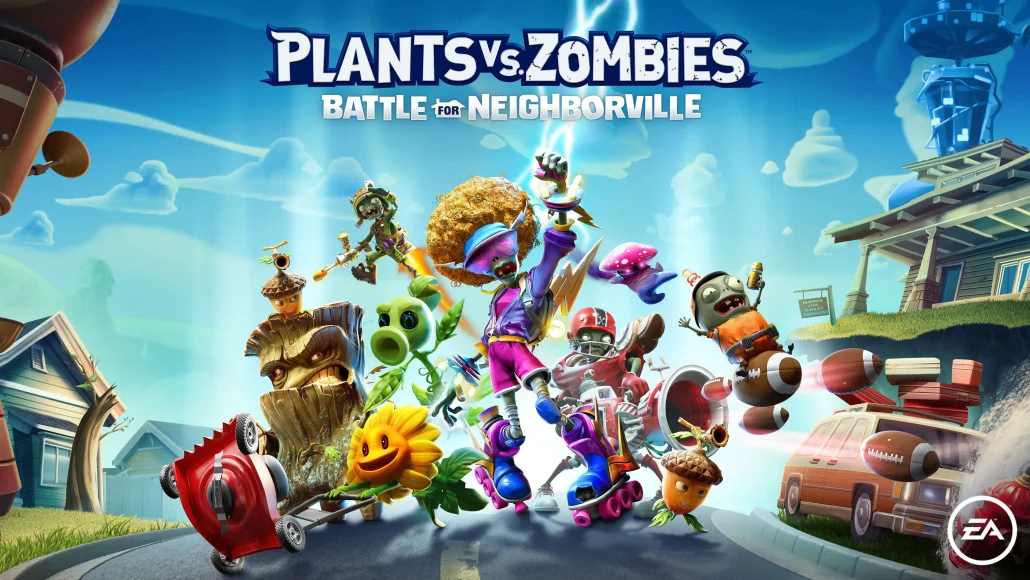Welcome to the dynamic intersection of simplicity and depth in gaming—Hybrid Casual Games. In this exploration, we embark on a journey through the distinct realm where accessible gameplay converges with intricate mechanics, defining a unique gaming experience. As we delve into the features, differences from hyper-casual counterparts, and the advantageous landscape of hybrid casual gaming, we aim to unlock the secrets behind its monetization strategies and development systems. Join us in deciphering the types of game mechanics that set the stage for this gaming genre and exploring notable examples that exemplify its versatility. This is your guide to understanding and navigating the captivating world of Hybrid Casual Games.
What Are Hybrid Casual Games?
Hybrid Casual Games represent a captivating fusion within the gaming landscape, marrying the simplicity of casual gaming with additional features that offer players a more nuanced and engaging experience.
In essence, these games strike a delicate balance—accessible enough to attract casual gamers yet imbued with more complex mechanics to provide a deeper level of involvement. This genre serves as a bridge, offering players a middle ground between the straightforward nature of casual games and the more immersive qualities found in traditional gaming experiences.
Features Of Hybrid Casual Games
- Accessible Gameplay: Hybrid casual games maintain the hallmark of simplicity found in casual gaming, ensuring easy entry for a broad audience.
- Intricate Mechanics: Setting them apart, these games incorporate more complex mechanics, providing players with a deeper and more engaging experience compared to traditional casual games.
- Balanced Complexity: The gameplay strikes a harmonious balance between simplicity and complexity, offering both seasoned and casual players an enjoyable and rewarding gaming experience.
- Engaging Storylines: Many hybrid casual games integrate compelling narratives, adding an immersive layer to the gaming experience beyond what is typically found in casual titles.
- Varied Game Objectives: Players encounter a diverse range of objectives and challenges, adding depth to the gameplay and keeping them invested in the gaming journey.
- Strategic Decision-Making: Unlike purely casual games, hybrid titles often require strategic decision-making, encouraging players to think critically to achieve in-game goals.
- Progression Systems: These games commonly feature progression systems, allowing players to advance, unlock new levels, and enhance their in-game capabilities as they continue playing.
- In-Game Achievements: To further engage players, hybrid casual games often include achievement systems, rewarding players for accomplishing specific tasks or milestones.
- Dynamic Environments: The gaming environments in hybrid titles are often dynamic, providing visually appealing and evolving settings that contribute to a more immersive experience.
- Integration of Casual and Core Elements: Hybrid casual games seamlessly blend elements from both casual and core gaming genres, creating a unique fusion that appeals to a broad audience.


What Is the Difference Between Hyper-Casual And Hybrid Casual Games?
The gaming landscape is a diverse tapestry, and within it, distinctions arise between various genres. Hyper-casual and hybrid casual games, although sharing the casual gaming umbrella, differ in fundamental ways:
- Gameplay Complexity:
- Hyper-Casual: Hyper-casual games are characterized by extreme simplicity, often featuring one-tap controls and straightforward mechanics that require minimal effort to grasp.
- Hybrid Casual: In contrast, hybrid casual games introduce a more intricate layer to gameplay, combining accessible elements with deeper mechanics. Players can expect a balance between simplicity and complexity.
- Engagement Level:
- Hyper-Casual: Hyper-casual games aim for instant engagement, with players able to understand and enjoy the game within seconds of launching it.
- Hybrid Casual: Hybrid casual games offer a slightly higher level of engagement, encouraging players to invest more time and thought into gameplay without reaching the complexity of traditional games.
- Narrative and Features:
- Hyper-Casual: Hyper-casual games often lack intricate narratives and advanced features, focusing on quick, repetitive gameplay loops.
- Hybrid Casual: Hybrid casual games frequently incorporate engaging storylines and additional features, providing a more immersive experience compared to their hyper-casual counterparts.
- Target Audience:
- Hyper-Casual: Hyper-casual games target a broad audience, including those new to gaming seeking a casual, on-the-go experience.
- Hybrid Casual: Hybrid casual games cater to a similar audience but extend their appeal to players looking for a bit more complexity while still maintaining a casual gaming experience.
- Monetization Strategies:
- Hyper-Casual: Monetization in hyper-casual games often relies on ads, with players viewing advertisements to continue or enhance their gaming experience.
- Hybrid Casual: Hybrid casual games may incorporate more diverse monetization strategies, including in-app purchases, premium features, and a mix of ad-based revenue.
Understanding these differences helps players choose games that align with their preferences, whether they seek quick and straightforward entertainment or a more layered gaming experience.
The Distinct Advantages of Hybrid Casual Gaming
Hybrid casual gaming combines simplicity and complexity, offering a unique gaming experience with distinct advantages. With broad appeal, engaging complexity, and longer player engagement, these games strike a balance that caters to both casual and more invested players.
The inclusion of narrative depth, strategic thinking, and diverse monetization opportunities enhances the overall gaming experience. Versatile features, innovation in design, and a balanced learning curve contribute to the appeal of hybrid casual gaming, making it an advantageous and inclusive genre within the gaming landscape.
Monetization Of Hybrid Casual Games
Monetizing hybrid casual games involves a strategic blend of revenue models that leverage the genre’s balance between accessibility and engaging mechanics. One primary avenue is in-app purchases (IAPs), allowing players to buy virtual goods, upgrades, or additional content that enhances their gaming experience. This model capitalizes on the player’s investment in the game, offering tangible benefits and personalization options.
Complementing in-app purchases, hybrid casual games often incorporate premium features that players can unlock through one-time payments. These features may include ad-free experiences, exclusive content, or accelerated progression, providing an additional revenue stream for developers. By offering a mix of free and premium elements, developers strike a balance that caters to both paying and non-paying players.
The integration of advertising remains a significant monetization strategy in hybrid casual gaming. Developers leverage ads strategically, incorporating rewarded ads that offer in-game benefits, such as extra lives or virtual currency, incentivizing players to engage with advertisements voluntarily. This ad-based revenue model not only contributes to the game’s financial success but also ensures a seamless and non-intrusive experience for players, aligning with the genre’s casual and engaging nature.
Development System of Hybrid Casual Games
The development system of hybrid casual games is characterized by a nuanced approach that combines the simplicity of casual gaming with the design intricacies found in more complex genres. Developers focus on creating gameplay that is easy to pick up and play, ensuring accessibility for a broad audience. This often involves straightforward controls, minimal learning curves, and intuitive mechanics, allowing players to engage effortlessly.
Despite the emphasis on accessibility, developers inject depth into the gameplay, introducing more intricate mechanics that elevate the overall gaming experience. This careful balance requires a thorough understanding of player preferences, market trends, and the unique elements that define hybrid casual gaming. Developers prioritize creating a seamless fusion of simplicity and complexity, aiming to keep players entertained while encouraging prolonged engagement.
The development process also involves the integration of engaging narratives and features that go beyond the repetitive loops often associated with casual gaming. Storylines, progression systems, and varied game objectives contribute to a more immersive experience, providing players with a sense of achievement and progression. The iterative nature of game development allows developers to refine and enhance these elements, ensuring the final product resonates with the target audience and stands out within the competitive gaming landscape.


Types Of Hybrid Casual Game Mechanics
Hybrid casual games employ a diverse range of mechanics to create a gaming experience that seamlessly blends accessibility with engaging elements. Progression systems and achievement structures provide players with a sense of accomplishment and motivation to continue playing. The dynamic environments and varied game objectives prevent monotony, ensuring a well-rounded and immersive gameplay experience.
Strategic decision-making and time-based powers introduce complexity without overwhelming players, striking a balance that caters to both casual gamers and those seeking a more engaging experience. The inclusion of interactive storytelling and multi-character gameplay adds personalized and strategic dimensions to the games. These mechanics collectively contribute to the genre’s unique appeal, offering players a versatile and enjoyable gaming experience that spans a broad audience.
Examples Of Hybrid Casual Games
- “Clash Royale”
- Combining elements of real-time strategy and collectible card games, “Clash Royale” challenges players to deploy units and spells to defeat opponents strategically. The game’s accessible mechanics and short match durations appeal to casual gamers, while its strategic depth and competitive aspects engage a broader audience.
- “Plants vs. Zombies: Battle for Neighborville”
- This third-person shooter merges casual gameplay with strategic elements as players choose between various plant and zombie characters, each with unique abilities. The game features both cooperative and competitive modes, offering a mix of accessible gameplay and strategic team dynamics.
- “Hearthstone”
- Blizzard’s digital collectible card game, “Hearthstone,” combines casual accessibility with intricate card-based strategies. Players build decks, employ various classes, and engage in turn-based battles. Its hybrid nature lies in the simple card mechanics that appeal to casual players and the strategic depth that captivates more dedicated card gamers.
- “Crossy Road”
- “Crossy Road” exemplifies hybrid casual gaming with its endless runner concept and charming voxel graphics. Players guide characters across busy roads and rivers, avoiding obstacles. The game’s simplicity caters to casual gamers, while its competitive leaderboard and diverse character selection add engaging elements.
- “Pokémon GO”
- The augmented reality phenomenon, “Pokémon GO,” merges casual exploration with strategic Pokémon catching and battling. Players explore the real world to find and capture virtual Pokémon. Its hybrid nature lies in the accessible outdoor gameplay combined with more intricate mechanics such as Pokémon battles and team-based dynamics.
These examples showcase the versatility of hybrid casual games, appealing to a broad audience through a combination of accessible gameplay and engaging features that transcend traditional casual gaming experiences.
Conclusion
In conclusion, hybrid casual games represent a dynamic and inclusive genre that successfully merges simplicity with engaging mechanics. Their ability to strike a delicate balance between accessible gameplay and strategic depth has contributed to their widespread popularity. Through a combination of progression systems, varied objectives, and strategic decision-making, these games cater to both casual and more invested players.
The integration of dynamic environments, interactive storytelling, and diverse game mechanics adds layers of enjoyment, preventing monotony and ensuring player retention. As the gaming landscape continues to evolve, hybrid casual games stand out as versatile and enjoyable experiences that appeal to a diverse audience.


